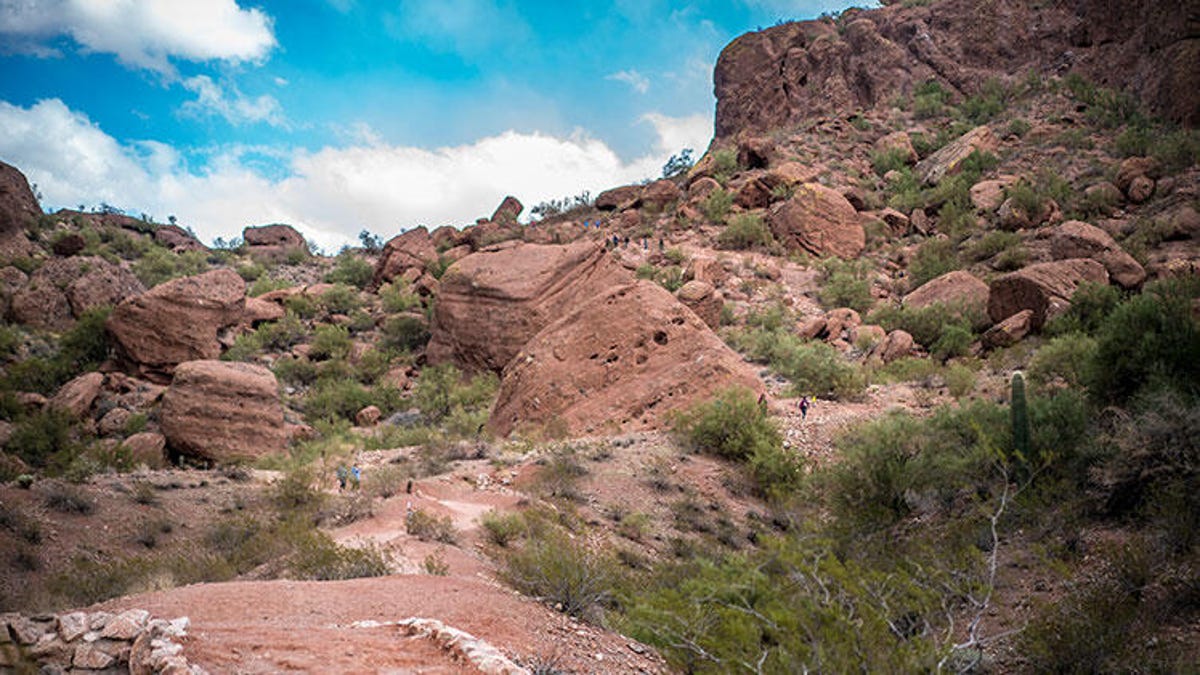
Officially it’s nearly autumn, but oppressive heat continues to broil the low-lying deserts of California and Arizona. On Saturday, Phoenix set a new record as the city saw its 54th day this year with temperatures over 110 degrees Fahrenheit.
Temperatures had reportedly reached as high as 113 in the sprawling Phoenix metroplex by 4 p.m. on Saturday. The previous record of 53 days at over 110 degrees was set in 2020.
Earlier this summer, the city endured a 31-day streak of days over 110, shattering the previous record streak of 18 straight days.
Maricopa County, which includes Phoenix, is also on pace to reach a grimmer milestone: a record for annual heat-associated deaths. As of Wednesday the county counted 194 such fatalities in 2023 so far, with 351 more deaths under investigation to determine a link to the heat. At this point in 2022, there had been 153 confirmed deaths from the heat with 238 more still being investigated. Last year’s final tally of 425 heat-associated deaths is the most recorded in a calendar year since the county started keeping track in 2006.
More than half of the heat deaths so far in 2023 are among people who are either experiencing homelessness (44%) or have an unknown living situation (10%).
The City of Phoenix Parks and Recreation Department closes popular hiking trails from 9 a.m. to 5 p.m. on days when the National Weather Service issues an excessive heat warning. On Thursday, the agency put out just such a warning, saying that “a period of very hot temperatures, even by local standards, will occur.” Anyone wanting to take a walk at Phoenix’s iconic Camelback Mountain this weekend will have to hit it early in the morning or later in the evening.
Not just a single city’s problem
The danger expands beyond Phoenix’s concrete-laden metroplex, with Tucson, Yuma, Palm Springs and places in between also under an excessive heat warning this weekend.
Many heat records in the western US are typically competing with previous marks set in just the past decade or so. Climate change and increasing surface temperatures have accelerated drastically in the 21st century, triggering increased risk of heat waves, drought, wildfire and stronger storms.
Solar physicist Keith Strong noted on Twitter Thursday that record high temperatures around the globe are tripling record lows.
“In the last week the Earth has set 1,178 new daily record high temperatures compared to just 351 new record lows,” Strong said. “If the climate were in climate balance, these two numbers should be statistically equivalent, but they are not.”
RECORD HIGH TEMPERATURES OUTPACING RECORD LOWS 3:1 – In the last week the Earth has set 1178 new daily record high temperatures compared to just 351 new record lows. If the climate were in climate balance, these two numbers should be statistically equivalent but they are not.
— Keith Strong (@drkstrong) September 7, 2023
How to stay cool and survive
The National Weather Service urges anyone in a region facing excessive heat to stay hydrated, avoid daytime sun exposure, wear light, loose clothes and seek out air conditioning.
For more on what types of clothing can help you beat the heat, check out our detailed guide to keeping cool.
Forecasters warn that fans may not be enough to cope with temperatures over 110 degrees this weekend, but access to air conditioning isn’t guaranteed for everyone in the Southwest. Fortunately, we’ve compiled 10 ways to get by without AC when temperatures soar.
And if you do have to rely on a fan, the proper placement will be key to get the most out of it and stem the sweating.
Also, fluids without alcohol, sugar and caffeine are more hydrating, as is eating smaller meals more frequently.
Be sure to check in on friends, family, neighbors and pets to see how they’re coping.
Many communities will offer public cooling shelters, including in Phoenix and Arizona’s Heat Relief Network. Check with your local county or municipal government for other resources.
Finally, if you’re in a heat zone, take some time to know the difference between heat stroke and heat exhaustion. Heat stroke can be deadly, so check out our guide on the signs, causes and what to do in such a scenario.
